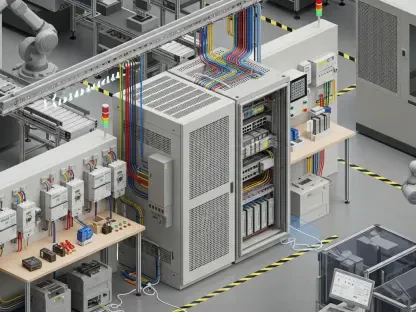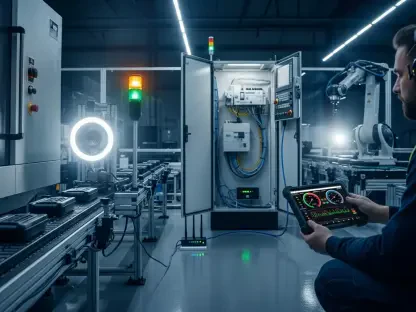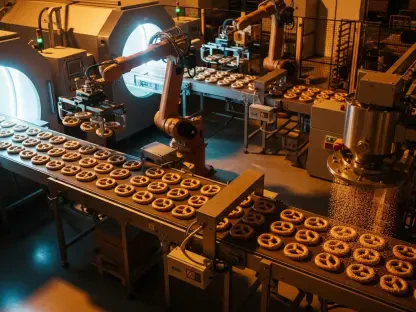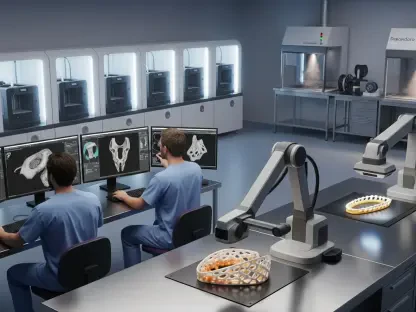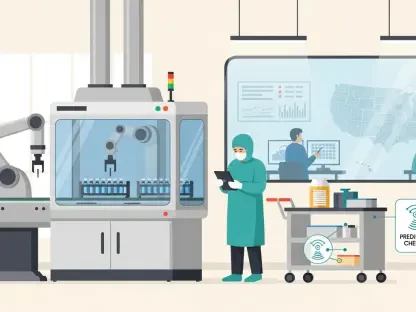A groundbreaking innovation in vat photopolymerization (VPP) has emerged, promising to reshape the realm of 3D printing by improving sustainability and expanding design capabilities. Engineers at MIT have pioneered a new VPP process that utilizes dual-wavelength light sources to transcend existing limitations. By employing ultraviolet (UV) and visible light, they have developed a distinctive resin capable of transforming into a typical thermoset polymer via UV exposure, while simultaneously forming a dissolvable thermoplastic under visible light. This dual-wavelength innovation allows for the creation of 3D-printed components, complete with supports that dissolve in environmentally friendly solvents such as D-limonene and ethyl acetate. This advancement not only heightens ecological sustainability but also simplifies the user experience.
Mitigating Waste through Innovative Processes
The Advent of Selective Solubility Vat Photopolymerization
Selective solubility vat photopolymerization (SSVP) represents a crucial leap forward in recycling and resource efficiency within the 3D printing sector. The ingenious addition of soluble support material that can be reclaimed from initially used structures and reintegrated into fresh resin batches marks a significant reduction in waste. This process, therefore, optimizes the consumption of materials required for 3D printing by promoting the reuse of substances. Consequently, this innovation fosters an environment conducive to sustainable production, enhancing the cradle-to-cradle lifecycle of manufacturing resources.
Notably, the dual-wavelength technology empowers the creation of complex structures characterized by moving or interlocking parts that would previously demand extensive, time-consuming manual removal of supports post-production. This capability not only saves time but also ensures the fidelity of intricately designed parts, bolstering applications in specialized fields. Personal medical devices like dental aligners and hearing aids, which demand both precision and customization, can notably benefit from these advanced manufacturing techniques. By enabling structure-specific solutions without sacrificing ecological considerations, SSVP paves the way for smarter, greener, and more innovative 3D printing practices.
Developing Sustainable Applications for the Future
MIT’s endeavor into utilizing dual-wavelength light sources does not halt at mere development; ongoing research is investigating the boundaries and potential applications of this technology. Amid the evolving landscape of additive manufacturing, the aim is to produce resins better suited for durable, long-lasting applications essential across various industries. By spearheading resource-efficient 3D printing endeavors, this initiative leans toward cost-effective production and minimized environmental impact—a crucial consideration in future manufacturing trends.
Further exploration uncovers the possibility of scaling up these sustainable practices, providing businesses with tangible options to integrate eco-friendly solutions while maintaining superior product quality. Insights from MIT’s research highlight the significance of transitioning to processes that prioritize waste reduction, financial viability, and environmental responsibility. These findings open a dialogue crucial to shaping future industry standards, providing frameworks for continued innovation, and catalyzing the broader adoption of innovative approaches to resin formulation.
Broadening Horizons for Additive Manufacturing
Changing the Landscape of 3D Printing
MIT scientists could potentially transform additive manufacturing by facilitating the seamless recycling and reuse of support materials while simultaneously achieving high-precision prints. By synthesizing the dual-wavelength resin from two available monomers and a bridging monomer, MIT’s team has unlocked the potential to create intricate designs that would be nearly impossible using traditional methods. This approach not only expands the range of possible 3D structures but also underscores a paradigm shift toward environmentally considerate engineering practices.
The overarching trend is clear—a movement toward more sustainable and efficient polymer 3D printing, with goals centered on scalability and the mitigation of material waste. As industries continue to seek ways to reduce their carbon footprint, the appeal of adopting this VPP technology grows stronger. With the promise of reduced reliance on non-recyclable substances, industries such as aerospace, automotive, and healthcare are beginning to take notice. Future aspirations focus on refining this technology and exploring additional monomer combinations to further expand the scope of this manufacturing marvel.
A Path Forward for Industry Adoption
Selective solubility vat photopolymerization (SSVP) marks a significant advancement in the 3D printing industry, emphasizing recycling and efficient resource use. By integrating soluble support materials that can be reclaimed and reused, the process significantly cuts down on waste. This approach optimizes material consumption for 3D printing, encouraging the reuse of resources and contributing to a sustainable manufacturing environment. It extends the lifecycle of raw materials within a cradle-to-cradle framework.
A standout feature of SSVP is its dual-wavelength technology, which allows for the fabrication of intricate structures with moving or interlocking parts. Traditionally, these structures required extensive manual post-production work to remove supports, which was time-intensive and could compromise design accuracy. SSVP eliminates these challenges, delivering precise, detailed parts. This capability is especially valuable in fields needing customization and precision, like personal medical devices such as dental aligners and hearing aids. SSVP facilitates sustainable, innovative, and eco-friendly 3D printing.


